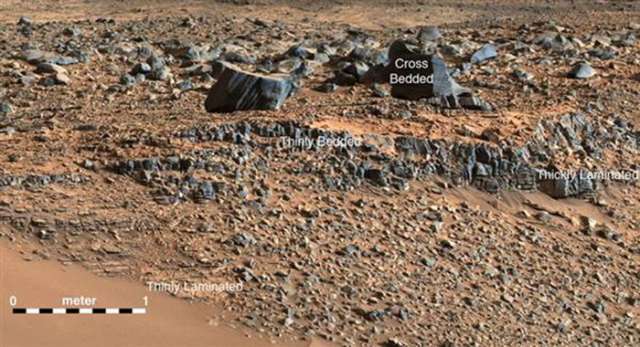"Observations from the rover suggest that a series of long-lived streams and lakes existed at some point between about 3.8 to 3.3 billion years ago," said Mars Science Laboratory project scientist Ashwin Vasavada, one of the study`s authors, in a JPL news release. These streams built up the base of Mount Sharp, the immense but gently sloping peak rising some 18,000 feet from the floor of Gale crater.
An area of Gale Crater where mudstone, pebbles and other deposits suggest the onetime presence of flowing and standing water. NASA/JPL-Caltech/MSSS
It was supposed before Curiosity arrived that Gale was filled with layers of sediments, which some proposed had accumulated from wind and other "dry" movement. The rover`s observations support an alternative theory: that the sediment was at the bottom of an ancient lake. Trails of coarser gravel suggested fast-moving streams, and fine-grained rocks likely formed from mud were found closer to Mount Sharp, which at the time would not have been a mountain, but a basin.
"Right on the other side of Gale`s northern rim are the Northern Plains. Some have made the argument that there was a northern ocean sitting out there, and that`s one way to get the moisture that you need to match what we are seeing in the rocks," said John Grotzinger, a geology professor at Caltech and lead author of the paper.
More about:
















































